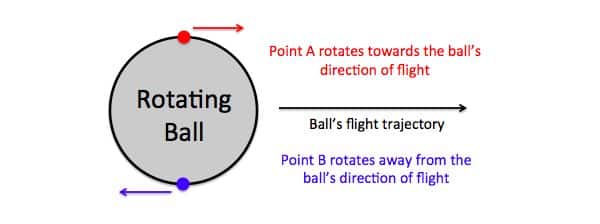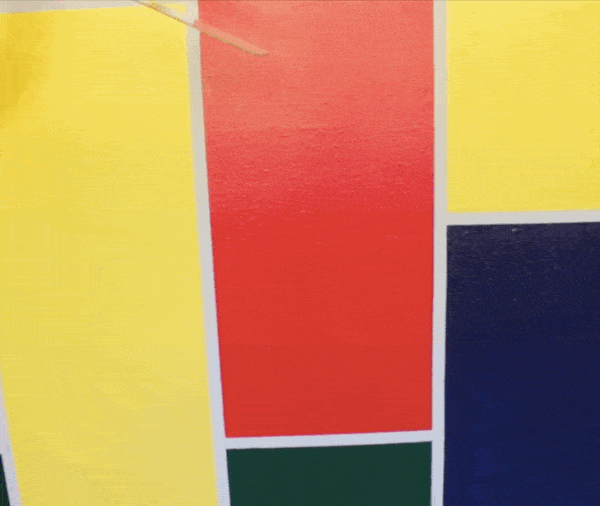
The Magnus effect allows pitchers to throw curveballs, soccer players to bend kicks around defenders, and golfers to launch drives along near-triangular flight paths. This fun physics phenomenon relies on the difference in relative airspeed at various points on the surface of a round object.
Viral video captures the Magnus effect in action, 2015. Credit: YouTube channel How Ridiculous. Full footage: https://www.youtube.com/watch?v=QtP_bh2lMXc.
Picture a ball moving through the air while spinning. For the ball to experience a net force, its axis of rotation must be oriented so that some points on the ball’s surface move in the same direction as its trajectory (let’s name one of these points A) while some move the other way (we’ll call an example of this type B).
At point A, the air dragged along by the ball’s surface and the air farther away rush past each other in opposite directions; at point B, they move in the same direction, although one still moves relative to the other (unless rotational speed and flying speed are perfectly matched). This is a bit like the difference between two cars going in opposite directions on the highway and a car in the fast lane passing one in the slow lane.
Like a boat traveling through water, the ball leaves a wake behind as it cuts through the air. The differences between relative airspeeds around a rotating ball cause its wake to pull to one side, resulting in an asymmetrical imbalance of air pressure. This lopsided push bends the ball’s path as it travels.
A DIY-friendly demonstration of the Magnus effect. Unlike the basketball, which had a backspin as it fell down the dam, the paper roll’s front edge is spinning along with its trajectory. This results in a backwards arc.
The Magnus force affects cylindrical objects in a similar way. Try this at home with a sheet of paper, rolled up and taped into a cylinder. Allow the paper tube to roll off the edge of an angled surface to give it a uniform spin, and watch its path curve!
Written By: Caela Barry




